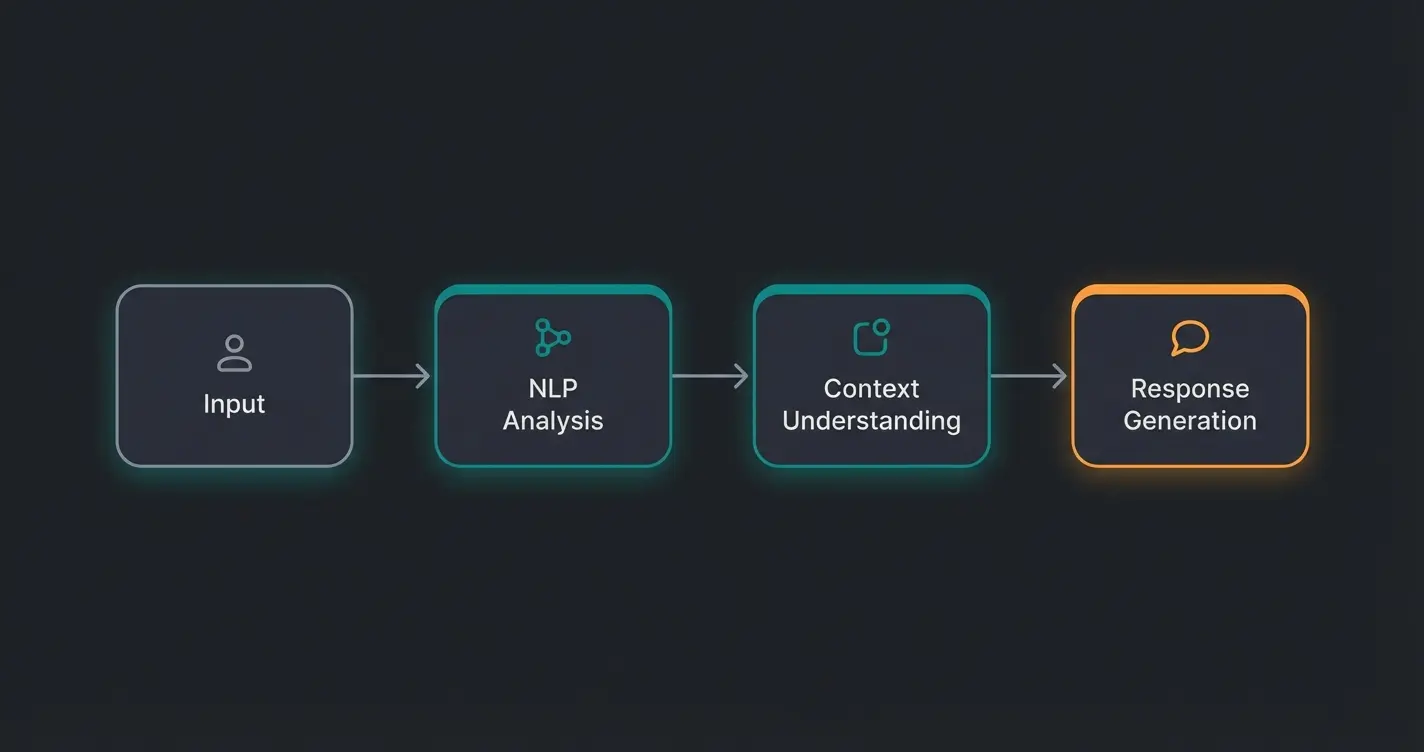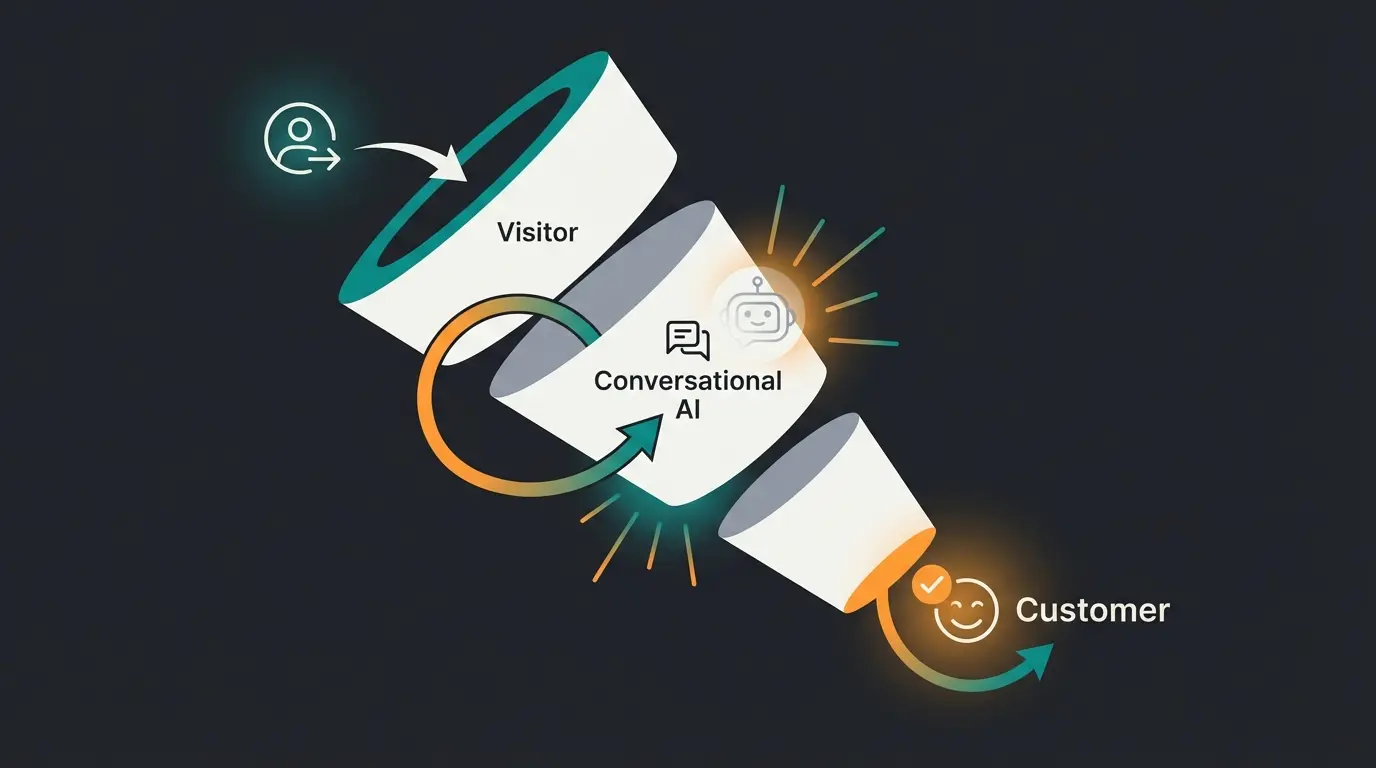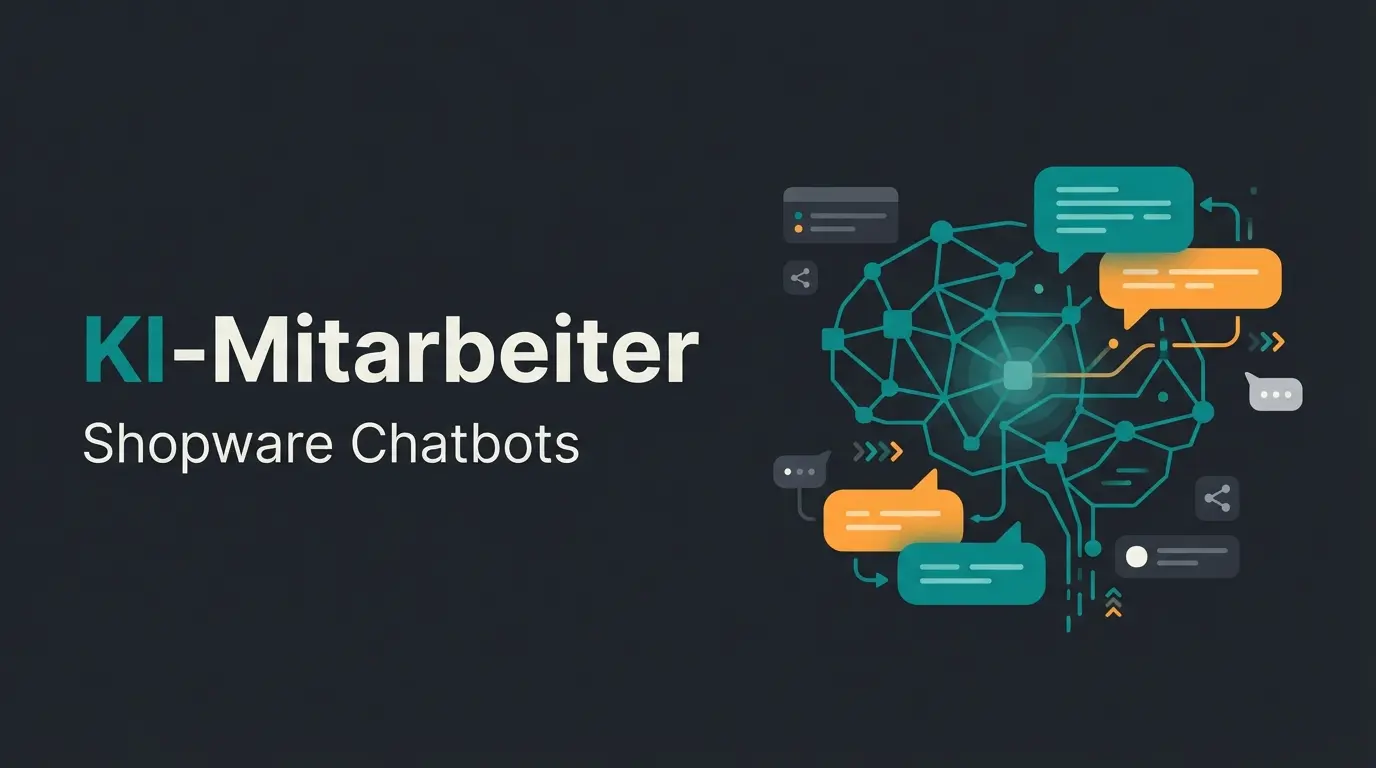Conversational AI: More Than Just Chatbots – The Key to Digital Product Consultation
Discover how Conversational AI evolves beyond simple chatbots into digital product consultants. Learn how to shift from reactive support to proactive guided selling.
Introduction to Conversational AI
Conversational AI, or dialogue-oriented artificial intelligence, represents a significant advancement in human-machine interaction. This technology enables computer systems to understand, interpret, and respond to human language in a natural way. IBM defines Conversational AI as "technologies like chatbots or virtual agents that users can speak with."
The development from simple chatbots to sophisticated Conversational AI systems marks a turning point in digital communication. While early chatbots were limited to pre-programmed answers, modern Conversational AI systems use advanced algorithms and machine learning to enable context-aware and personalized interactions. The evolution from chatbots to Conversational AI shows how this technology is becoming increasingly human-like and efficient.
For companies and consumers, Conversational AI holds immense importance. Companies benefit from improved customer interactions, cost savings, and efficiency gains. Consumers experience a new dimension of customer service with 24/7 availability, fast response times, and personalized solutions. However, the true potential lies beyond just answering support tickets; it transforms the way we interact with digital systems, opening new possibilities in areas like customer service, e-commerce, and healthcare.
Ready to move beyond basic bots? See how our AI can act as your top sales consultant 24/7.
Start Free TrialWhat is Conversational AI? (Definition & Basics)
At its core, Conversational AI is not just a script; it is a system capable of understanding intent. It relies on a suite of advanced technologies working together to facilitate human-like interactions. The core components include:
- Machine Learning (ML): Enables systems to learn from data and adapt over time without explicit programming.
- Natural Language Processing (NLP): Analyzes and understands the structure of human language.
- Natural Language Understanding (NLU): Interprets the intent behind linguistic expressions (e.g., distinguishing "I want to book a flight" from "Cancel my flight").
- Natural Language Generation (NLG): Generates human-like, coherent responses.
- Automatic Speech Recognition (ASR): Converts spoken language into text for voice assistants.
The functioning of AI chatbots, which form the heart of many Conversational AI systems, is complex and fascinating. How AI chatbots work can be divided into several steps: First, user input is captured and analyzed. Then, the system interprets the intent and context of the request. Finally, it generates a suitable response and delivers it back to the user.
According to IBM, the process of Conversational AI involves four main steps:
- Input Generation: Capturing the user request (voice or text).
- Input Analysis: Processing and interpreting the request using NLU.
- Dialogue Management: Deciding on the appropriate response based on context.
- Reinforcement Learning: Continuous improvement through feedback and historical interactions.

Conversational AI vs. Traditional Chatbots
One of the most common misconceptions is that all chatbots are created equal. In reality, there is a massive gap between the "Old Way" (Rule-Based) and the "New Way" (AI-Driven). Users today expect more than just a menu of buttons; they expect a conversation.
| Feature | Traditional Chatbots (Rule-Based) | Conversational AI (AI-Driven) |
|---|---|---|
| Technology | Decision Trees (If/Then logic) | NLP & Machine Learning |
| Flexibility | Breaks if user deviates from script | Adapts to unforeseen inputs |
| Context | Forgets context immediately | Remembers context across the chat |
| Goal | Deflect Support Tickets | Consultation & Problem Solving |
| Learning | Static (Must be manually updated) | Dynamic (Learns from interactions) |
Why Support is Not Enough: The Shift to Active Consultation
Most companies stop at support. They implement a bot to answer FAQs like "Where is my order?" or "How do I reset my password?". While this reduces costs, it misses the biggest opportunity: Revenue Generation.
We are seeing a paradigm shift from Reactive Support (solving problems) to Proactive Consultation (guiding decisions). A true Conversational AI doesn't just wait for a complaint; it acts as a Digital Expert Consultant. It engages the user, asks clarifying questions, and performs a needs analysis similar to a salesperson in a physical store.
The Game Changer: AI Applications in Product Consultation
In the realm of E-Commerce, the concept of Conversational Commerce has established itself. However, to truly succeed, we must move towards Guided Selling.
Imagine a customer looking for a laptop. A standard chatbot would just link to the "Laptops" category page. A Conversational AI, acting as a Digital Product Consultant, would navigate the complexity for the user:
This approach drastically increases conversion rates because it reduces "decision paralysis." The customer isn't left alone with a filter menu; they are guided to the right solution.
Key Use Cases for Conversational AI
Conversational AI finds application across various industries and areas. The technology revolutionizes how companies interact with their customers and optimize internal processes. Here are some of the most important use cases:
1. Customer Service and Support
In customer service, Conversational AI offers significant advantages. AI-powered chatbots enable 24/7 availability and ensure fast response times. They can process routine inquiries efficiently, allowing human employees to focus on more complex tasks. By learning from every interaction, these systems continuously improve their performance, offering increasingly precise and personalized support.
2. E-Commerce and Sales (The Digital Consultant)
As mentioned, Conversational AI systems act as virtual sales consultants guiding customers through the entire buying process. They can provide personalized product recommendations, answer detailed questions about articles, and even accept orders. This leads to an improved shopping experience and can significantly increase conversion rates and Average Order Value (AOV).

3. Human Resources and Recruiting
In Human Resources, Conversational AI assists in automating HR processes. From initial applicant screening to answering employee questions, AI-supported systems can be utilized. They can pre-filter applications, schedule interviews, and support new employees during onboarding. This saves time and resources, allowing HR professionals to focus on more strategic tasks.
4. Healthcare
In the healthcare sector, Conversational AI contributes to improving patient care. AI-supported assistants can help patients schedule appointments, send medication reminders, and answer basic medical questions. In telemedicine, they can serve as a first point of contact to record symptoms and refer patients to the appropriate specialists if necessary. This relieves medical staff and improves access to basic health information.
Benefits: From Cost Efficiency to Revenue Growth
Implementing Conversational AI offers numerous benefits to companies and customers. This innovative technology not only transforms customer communication but also optimizes internal processes and increases overall efficiency.
Never miss a lead, regardless of time zone.
Guided selling converts higher than static pages.
Automate routine inquiries efficiently.
Efficiency Increases and Cost Savings
Conversational AI systems can handle a multitude of inquiries simultaneously without the need to hire additional staff. This leads to significant cost savings while increasing efficiency. Routine tasks are automated, allowing human employees to focus on more complex and value-adding activities. Reducing wait times and improving response speed further contribute to efficiency gains.
Improved Customer Experience
Conversational AI enables personalized support and tailored product recommendations. AI-supported systems can access previous interactions and consider the context of each request. This leads to more consistent and relevant communication. Customers receive fast, precise answers to their questions, leading to higher satisfaction and loyalty.
Scalability
Conversational AI systems are characterized by their high adaptability to growing demands. They can be easily scaled to handle increasing inquiry volumes without requiring proportionally more resources. This flexibility allows companies to react quickly to demand spikes, whether due to seasonal fluctuations or unexpected events.
Challenges in Implementing Conversational AI
While introducing Conversational AI offers numerous benefits, it also brings some challenges. To ensure successful implementation, companies must be aware of these hurdles and develop appropriate strategies to overcome them.
- Data Protection and Security: Since these systems often work with personal information, strict security measures are required, including encryption and GDPR compliance.
- Linguistic and Cultural Barriers: Systems must understand different languages, dialects, and cultural nuances. According to IBM, dealing with colloquialisms and typos is essential for natural communication.
- Integration into Existing Systems: Seamless integration into IT infrastructures is complex. Qualimero offers a comprehensive guide on integrating AI chatbots covering APIs, data migration, and testing.
Best Practices for Successful Projects
To fully exploit the benefits and overcome challenges, companies should follow proven best practices:
Clear Objectives and Strategy
Before investing, define clear goals. Are you trying to deflect support tickets or sell products? Identify specific use cases and measurable KPIs. A clear strategy helps allocate resources effectively.
Focus on User Experience
Success depends on the quality of the user experience. According to Qualimero, it is crucial to design natural and context-aware interactions. Ensure the conversation feels human, retains context, and handles misunderstandings gracefully.
Continuous Improvement and Learning
Conversational AI is not a static technology. Establish a process for constant optimization, including data analysis, feedback integration, and regular retraining of the AI model with new data.
Don't settle for a basic bot. Implement a Conversational AI that understands your customers and drives sales.
Get a DemoFuture Trends in Conversational AI
The development of Conversational AI is progressing rapidly. Future trends will fundamentally change how we interact with AI systems:
- Multimodal Interactions: Future systems will not be limited to text and speech but will process gestures, images, and emotions for a more intuitive experience.
- Emotional Intelligence: AI will become capable of recognizing the user's emotional state and responding with empathy, crucial for sensitive healthcare or support scenarios.
- Enhanced Personalization: Advances in ML will allow for hyper-personalized experiences, adapting to individual preferences and behaviors in real-time.
Conclusion: The Transformative Power of Dialogue
Conversational AI has the potential to fundamentally change how companies interact with their customers. It moves beyond efficiency and cost savings to become a driver of customer satisfaction and revenue growth. By automating routine tasks and acting as a proactive digital consultant, companies can build closer relationships with their customers and stand out in a competitive market.
Ultimately, Conversational AI is not just a tool for efficiency; it is an integral part of a modern corporate strategy. Companies that successfully deploy this technology—shifting from reactive support to active consultation—will be the ones who lead the future of digital business.
A traditional chatbot follows a rigid, rule-based script (if/then logic). Conversational AI uses Natural Language Processing (NLP) to understand the intent and context behind a user's message, allowing for dynamic, human-like conversations.
Yes. By acting as a 'Digital Product Consultant,' Conversational AI can perform needs analyses, recommend specific products based on user input, and guide customers through complex purchase decisions, significantly boosting conversion rates.
Integration complexity varies, but modern platforms offer robust APIs. Key steps include analyzing existing systems, data migration, and training the AI model. Proper planning ensures a smooth connection to your CRM or ERP systems.
Yes, advanced Conversational AI systems are designed to support multiple languages and even detect regional dialects, making them ideal for global businesses.
Turn your traffic into revenue with a Conversational AI that sells as well as your best expert.
Start Now
